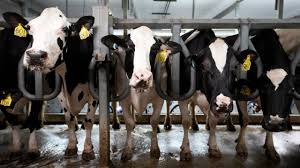Addressing the Growing U.S. Outbreak
A Significant Response
Authorities are taking proactive measures in response to the escalating outbreak of highly pathogenic avian influenza, or H5N1, in the United States. With the aim of curbing the spread of the virus, officials have initiated the production of 4.8 million doses of flu vaccine.
Investigation by Health Authorities
The Centers for Disease Control and Prevention (CDC) are closely monitoring the situation, investigating the increasing number of human cases associated with the unprecedented outbreak of the virus in dairy cattle this year. This thorough examination is crucial for understanding the transmission dynamics and mitigating further spread.
Utilizing Pre-Pandemic Resources
The vaccine production draws from a “pre-pandemic” stockpile funded by the federal Administration for Strategic Preparedness and Response. Leveraging existing resources enables a swift and coordinated response to emerging health threats, ensuring the availability of essential medical supplies during critical times.
Manufacturing Process and Capacity
Vaccinemaker’s Role
CSL Seqirus, a leading vaccinemaker, has been entrusted with the task of manufacturing the flu vaccine doses. Operating from its facility in North Carolina, CSL Seqirus employs a highly scalable production method to meet the demand for influenza vaccines.
Capacity for Response
The company emphasizes its capability to deliver up to 150 million influenza vaccine doses within six months of a pandemic declaration. This scalability underscores the importance of preparedness and rapid response in safeguarding public health during health crises.
Composition of Vaccine Doses
Critical Ingredients
Each vaccine dose is composed of two key components: an “antigen” targeting the H5 portion of the H5N1 virus and an “adjuvant” designed to enhance the immune response elicited by the vaccine. This formulation ensures an effective and robust immune defense against the influenza virus.
Strengthening Preparedness
The production of 4.8 million flu vaccine doses marks a proactive step in addressing the avian influenza outbreak in the United States. By leveraging pre-pandemic resources and employing scalable manufacturing methods, authorities aim to mitigate the impact of the virus and protect public health.




